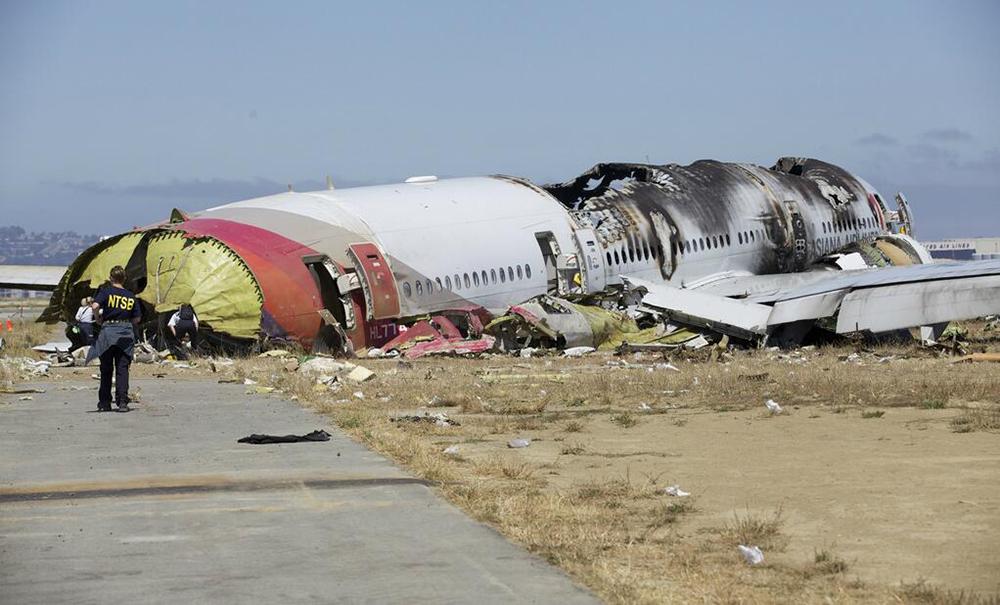
The fateful flight into San Francisco International Airport last July where the Boeing 777 flew in at 30 knots below normal approach speed and a dangerously nose-high attitude has been investigated by the NTSB and has released details of a hearing held Wednesday December 11.
The NTSB has just released new footage of the Asiana crash. The captain of the Boeing 777 who piloted the fateful flight was flying manually. At one point on the approach, the speed of the jet dropped substantially, and the jet hit the seawall at an airspeed that was 34 knots to slow.
The NTSB’s investigation has uncovered that the captain of the jet was concerned and stressed out by the visual approach. The approach was made with aid of the PAPI lights but without the vertical assistance that would have been provided by the ILS (Instrument Landing System). The captiain proclaimed that it was very difficult to make the approach in such a heavy airplane. According to the Asiana air operations safety divisions director, the captain, an employee of the airline for eight years, Lee Kang Kuk, was an experienced pilot with no record or poor performance or disciplinary actions. The landing should have been no problem for him.
The fact that this landing caused such considerable stress is disconcerting, and many are wondering and asking the question which is so de rigueur these days – is there an over reliance on automation?
The NTSB has released new surveillance video of the crash.

